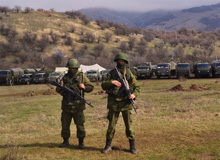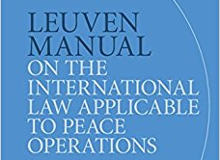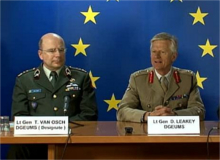The subject of hybrid warfare – a strategy which blends conventional and irregular means of warfare – has attracted considerable attention in recent years. Much of that interest has been prompted by the expansion of Islamic State (IS) in Iraq and Syria and Russia’s intervention into Ukraine. In their Wales Summit Declaration issued on 5 September 2014, the Heads of State and Government of the NATO member countries had the following to say on the matter:
We will ensure that NATO is able to effectively address the specific challenges posed by hybrid warfare threats, where a wide range of overt and covert military, paramilitary, and civilian measures are employed in a highly integrated design. It is essential that the Alliance possesses the necessary tools and procedures required to deter and respond effectively to hybrid warfare threats, and the capabilities to reinforce national forces.
The Declaration echoes what seems to be a common element in most definitions of hybrid warfare, namely the use of ‘a wide range of overt and covert military, paramilitary, and civilian measures’ in ‘a highly integrated design’. However, the concept and its practical implications remain the subject of debate.

What is clear is that legal considerations and arguments play an important element of hybrid conflict. However, so far the legal aspects of hybrid warfare have received only limited attention. To address this gap, I had the pleasure of convening an expert workshop at the Strategy and Security Institute of the University of Exetetr in collaboration with the NATO Office of Legal Affairs and the Allied Rapid Reaction Corps. The workshop brought together senior legal advisors and experts from across the UK and NATO in an effort to deepen our understanding of the subject and set the direction for future work (more information here).
I have written up my thoughts on the subject, shaped in part by the discussions we had at Exeter, in a blog post published on Lawfare (see here).
As I explain in greater detail in the post, the legal aspects of hybrid warfare raise three main questions. The first is a conceptual one. Is hybrid warfare merely a buzz word, convenient in the eyes of some but irritating to the ears of others, or does it actually denote a new stage in the evolution of warfare? The second question concerns the legal challenges posed by hybrid threats. While some commentators suggest that hybrid warfare is not a genuinely novel development and as such does not present novel legal difficulties, my own view is that the systematic exploitation of legal arguments for strategic ends in our current legal environment does present a new combination of challenges. The third question concerns the response to hybrid threats. I am not convinced that efforts to reduce legal ambiguity, thereby attempting to cut one of the lifelines sustaining hybrid warfare, offers a complete solution. Developing sound policy and doctrine would seem to be a more effective approach.
The Exeter workshop has made a contribution to an ongoing dialogue on the legal aspects of hybrid warafare, but more detailed work is required. I intend to take forward some of that work in the form of a research project in the near future.




